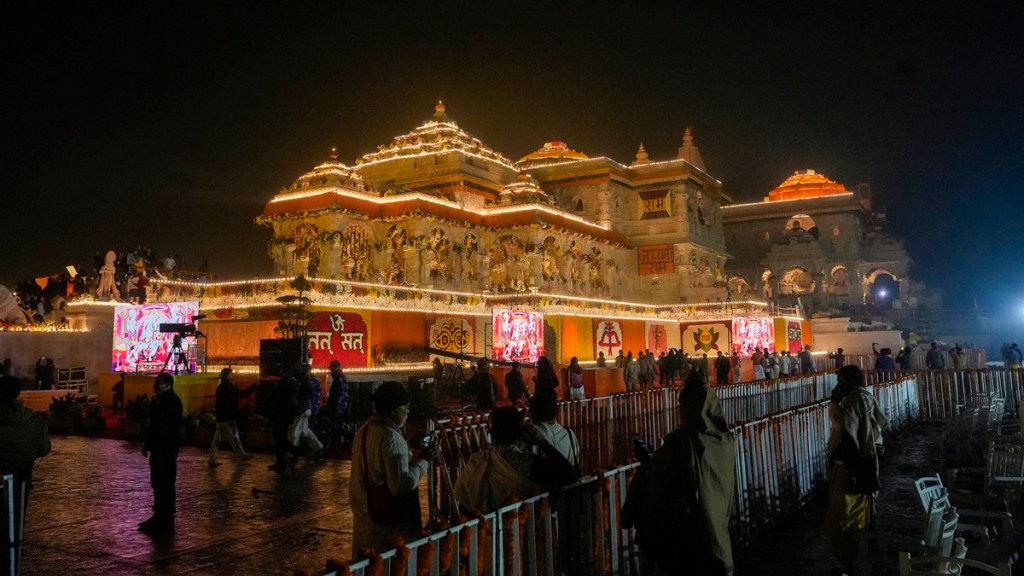Amidst the euphoria over the Ayodhya temple, the political class—especially the ruling dispensation—and the people of India must pay heed to Rashtriya Swayamsevak Sangh (RSS) chief Mohan Bhagwat’s message of reconciliation and rapprochement. At the consecration of the temple, Bhagwat called for josh (excitement) to be tempered with hosh (reason). Bhagwat called for working towards societal harmony, and said others may have different beliefs and even when we are correct, we should maintain sanyam (restraint). The message couldn’t be clearer: Disputes over places of worship need to be buried after Ayodhya.
The clamour for ‘reclaiming’ lost temples has been growing, with the ruling party’s aggressive championing of the so-called Hindu cause providing impetus. Litigants claiming to represent the Hindu cause have already set targets on the Shahi Idgah mosque in Mathura and the Gyanvapi mosque in Varanasi. But the ruling party ideologues and functionaries can serve the Ram rajya ideal better if they keep in mind the deepening of communal divides in the Babri aftermath and discourage such endeavours. The first step towards this would be to uphold the sanctity of the Places of Worship Act 1991.
The Act preserves the religious nature and affiliation of a place of worship as it existed on August 15, 1947. Section 3 bars its conversion —no one is allowed to convert any place of worship that belonged to a religion or its sect on August 15, 1947, into the place of worship of another religion. Per Section 2(b), “conversion” includes “alteration or change of whatever nature.”
In a diverse society, with a history of communities jostling for power over centuries, the Act is crucial to move forward by taking everyone along, something that Bhagwat sought to underscore in his speech at Ayodhya. However, the constitutionality of the law has been challenged before the Supreme Court by, among others, BJP Delhi unit affiliate and advocate Ashwini Upadhyay.
His petition claims that the Act violates the right to life and the right to religious freedom of the Hindus, Sikhs, Jains and Buddhists in its choice of cut-off date—as, since 1192, Muslim invaders and colonists destroyed many places of worship belonging to the former. Another petition, by BJP’s Subramanian Swamy, seeks an exception for the Mathura and Kashi temples—quite like what was provided for in the Babri case in the original Act. Swamy plans to seek an urgent hearing of the same by the apex court.
Even as Ayodhya represents a victory for the majority community—won through both force and the judicial route—the ruling dispensation and the adherents of its ideology need to be magnanimous now. Triumphalism and grievance must give way to reconciliation and harmony; and fear must yield to hope. The Ram rajya ideal can’t just be about restitution for past wrongs, real or imagined, and majoritarian muscle flexing.
The goal of becoming one of the top three economies in the world can’t be realised if communal tensions simmer under the surface, forever threatening stability and security. The government must be allowed to focus its energies on improving the lot of the common citizenry—from giving rural wages a much needed boost to improving the employment and skilling scenario. Speaking after the consecration of the temple, Prime Minister Narendra Modi said the temple was not a force that “evoked fear”, but “urja” (energy) that needed to be harnessed. The leader and the followers need to walk that talk.

